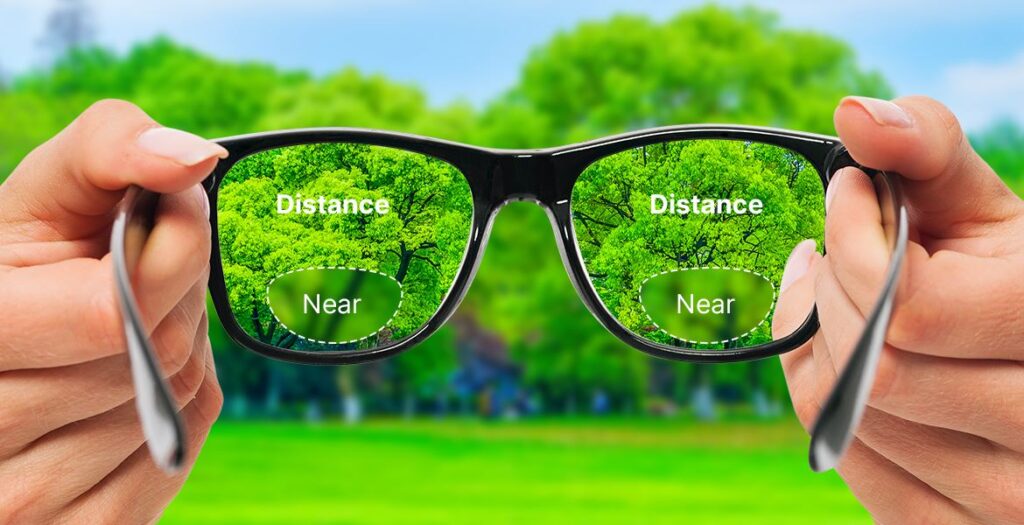How Do Bifocals Look Like And Work?
A bifocal lens is a type of eyeglass that has two different optical powers in one lens. When you examine closely at a bifocal lens, you will see a line where these different viewing zones meet. The top part of the lens corrects distance vision, while the bottom section corrects near vision.
We will examine this type of eyewear in greater detail in this article, including how they function and who might benefit from them, as well as some modern alternatives to bifocals.
How Do Bifocals Work?
You can easily shift your focus from distant objects to close-up objects or text with a bifocal lens since it is divided into two distinct sections.
Because people tend to look down when reading or performing tasks requiring close viewing, near objects are located at the bottom of the lens. Take a moment to observe where your eyes focus when you are reading a book, sewing by hand, or texting. (Downward is the answer, correct?)
Who Invented Bifocals?
It wasn’t until Benjamin Franklin noticed his eyesight was declining in 1784 that he developed the bifocal lens. He was having difficulty seeing both up close and far away, and eyeglasses of the time were unable to address both problems concurrently.
By combining the lenses of two different pairs of glasses, Franklin created “double spectacles,” or what we now refer to as bifocals. This is an important step forward in the evolution of eyewear.
Types of Bifocal Lenses
Here are some of the more common types of bifocal lenses you can buy today. Each type has a different shape for the near-vision zone of the lens.
-
Executive: lens covers the entire bottom half of the lens, which is also known as the E style (“E” is for Executive, naturally), or the Franklin style (which is based on the invention of Benjamin Franklin).
-
Flat Top: is characterized by a near-vision zone that resembles a half moon and is also referred to as a D segment due to its shape resembling the letter “D” turned upside down.
-
Segment of ribbon: This is a narrow rectangular zone of near vision.
-
Round segment: As its name implies, this type of lens possesses a circular near-vision zone.
When Are Bifocal Lenses Prescribed?
There are a number of benefits to multifocal glasses, such as bifocals and trifocals, such as saving you from having to switch between prescription distance eyeglasses and prescription reading eyeglasses.
Over the age of 40, presbyopia usually begins to develop, which is why bifocals are often prescribed for patients. As we age, the eye’s lens becomes less flexible and has a more difficult time properly focusing light on the retina. Presbyopia is also sometimes known as age-related farsightedness. Therefore, it becomes difficult to focus on close objects or read without things appearing blurry.
In addition to presbyopia, bifocals are sometimes prescribed for other conditions as well. For example, children with amblyopia (sometimes called lazy eye) or accommodative esotropia (a type of strabismus) may require bifocal glasses. This condition can be enhanced by a bifocal lens’ near-vision zone, which will aid in supporting the child’s focusing skills as well as preventing or reducing the child’s weaker eye from turning inward.
















